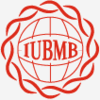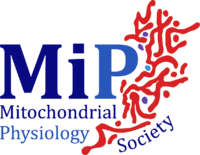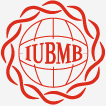Difference between revisions of "MiP2014"
| Line 49: | Line 49: | ||
Particularly in view of Subtopic C, it may be attractive for mitochondrial organizations to send and support delegates. The conference will, therefore, provide a unique forum for international networking, and may inspire new national groups to be formed in contact with established mitochondrial organizations: | Particularly in view of Subtopic C, it may be attractive for mitochondrial organizations to send and support delegates. The conference will, therefore, provide a unique forum for international networking, and may inspire new national groups to be formed in contact with established mitochondrial organizations: | ||
'''» [[MitoGlobal_Organizations]]''' | '''» [[MitoGlobal_Organizations]]''' | ||
'''»''' [[Bioblast Glossary: Respiratory states]] [[Image: | '''»''' [[Bioblast Glossary: Respiratory states]] [[Image:P.jpg|link=OXPHOS capacity|OXPHOS]] [[Image:E.jpg|link=ETS capacity|ETS]] [[Image:R.jpg|link=ROUTINE respiration|ROUTINE]] [[Image:L.jpg|link=LEAK respiration|LEAK]] - [[Image:ROX.jpg|link=Residual oxygen consumption|ROX]] | ||
== MiP2014 preliminary list of participants == | == MiP2014 preliminary list of participants == | ||
Revision as of 14:14, 8 August 2014
International Union of Biochemistry and Molecular Biology and Mitochondrial Physiology Society
Obergurgl, Tyrol, Austria. 2014-Sep-08 to 12
MiP2014 - a point/counterpoint meeting
Mitochondrial research has recently undergone a dramatic renaissance, due to numerous discoveries revealing its central role in cell death, disease pathology, aging, thermogenesis, oxidative stress, cell signalling, cellular regulation and cell bioenergetics. The aim of the small symposium is to bring together experts in mitochondrial research spanning from the biochemical and molecular level to the interactions within the cell. In addition to the latest scientific findings, new methodological developments in measuring mitochondrial function and dysfunction are presented. A point/counterpoint format is chosen to discuss selected hot topics and some fundamental methodological and conceptual issues.
The expected attendance is max. 100 participants. ->> Compare MiP2013 Programme
Abstracts and presentations: refer to IUBMB nomenclature; >> Bioblast Glossary: Respiratory states
MiP2014 Abstracts
| Has title | |
|---|---|
| Alberici 2014 Abstract MiP2014 | Effects of long-chain acyl-CoA synthetase 6 knockdown in primary skeletal muscle cells metabolism. |
| Ali 2014 Abstract MiP2014 | Oxygen-consuming and ROS-producing activities in synaptosomes. |
| Amoedo 2014 Abstract MiP2014 | The metabolic panorama during tumor progression towards malignancy. |
| Balazova 2014 Abstract MiP2014 | Balanced ratio of anionic mitochondrial phospholipids is important for mitochondrial functions in the yeast Saccharomyces cerevisiae. |
| Borutaite 2014 Abstract MiP2014 | Controversies regarding cytochrome c test for mitochondrial membrane integrity. |
| Bresciani Martins de Andrade 2014 Abstract MiP2014 | Mitochondrial function in white adipose tissue: palmitoleic acid (C16:1n7) treatment enhances white adipocyte oxygen consumption. |
| Bristot 2014 Abstract MiP2014 | High-resolution respirometry and bioenergetics evaluation in fibroblasts derived from patients with TP53 germline mutations. |
| Brown DA 2014 Abstract MiP2014 | The cardiolipin-targeting peptide Bendavia preserves post-ischemic mitochondrial energetics by sustaining respiratory supercomplexes. |
| Brown G 2014 Abstract MiP2014 | Complex I inhibition in microglia and inflammatory neuronal loss. |
| Burtscher 2014 Abstract MiP2014 | Region-specific differences in Complex I- and Complex II-linked respiration in the mouse brain. |
| Busch 2014 Abstract MiP2014 | Mitochondrial fusion and fission dynamics are indispensable for homogenization of inner mitochondrial membrane proteins: insights from superresolution studies. |
| Cherubini 2014 Abstract MiP2014 | Striatal deregulation of Cdk5 alters mitochondrial dynamics in Huntington’s disease. |
| Coen 2014 Abstract MiP2014 | Exercise improves insulin sensitivity and muscle mitochondrial respiration following Roux-en-Y gastric bypass surgery. |
| Contreras-Ferrat 2014 Abstract MiP2014 | Insulin increases mitochondrial calcium levels regulating both mitochondrial function and intracellular signaling in muscle; this effect is disrupted in fibers from short-term high fat diet fed mice. Mitochondr Physiol Network 19.13. |
| Dohlmann 2014 Abstract MiP2014 | Mitochondrial adaptations to high-intensity training in young and elderly men and women. |
| Eggimann 2014 Abstract MiP2014 | Adaptation to nutrient availability in human fibroblasts with mitochondrial dysfunction: the role of sirtuins. |
| Eide 2014 Abstract MiP2014 | Reversible mitochondrial DNA mutagenesis. |
| El-Bacha 2014 Abstract MiP2014 | Cytotoxicity of grape pomace extract (Vitis vinifera L.) from Brazilian wine industry in human hepatocarcinoma HepG2 cells. |
| Felser 2014 Abstract MiP2014 | Assessing mitochondrial dysfunction in fibroblast cells – a comparison between O2k and multiwell respirometry. |
| Ferreira 2014 Abstract MiP2014 | Impairment of bioenergetic parameters induced by acute carnosine administration in skeletal muscle of young rats. |
| Figueira 2014 Abstract MiP2014 | Mitochondrial respiration and calcium transport in rat tissues: conversely from skeletal muscle, heart and brain, isolated liver mitochondria exhibit gender dimorphism in respiratory activity. |
| Galina 2014 Abstract MiP2014 | Effects of perinatal asphyxia in mitochondria of brain during development of the central nervous system. |
| Gnaiger 2014 Abstract MiP2014 | Cell ergometry: OXPHOS and ET-pathway coupling efficiency. |
| Gnaiger 2014 Preface MiP2014 | MiPArt - Mitchell's equation. |
| Grefte 2014 Abstract MiP2014 | Myotube formation does not require mitochondrial ATP production but is inhibited by rotenone via the Rho-associated, coiled-coil containing protein kinase II. |
| Hahn 2014 Abstract MiP2014 | Validation of oxygen consumption measurements in muscle and fibroblasts from patients with mitochondrial diseases. |
| Harrison 2014 Abstract MiP2014 | The relationship between cytochrome redox state and oxygen consumption in isolated mouse and beef heart mitochondria during hypoxia. |
| Hepple 2014 Abstract MiP2014 | Denervation modulates mitochondrial function when aging muscle atrophy becomes severe: implications for therapeutic intervention. |
| Herbst 2014 Abstract MiP2014 | Analysis of mitochondrial function in multiple brain regions through in situ permeabilization. |
| Herminghaus 2014 Abstract MiP2014 | Severity of polymicrobial sepsis modulates mitochondrial function in rat liver. |
| Hickey 2014 Abstract MiP2014 | Mitochondrial inefficiencies and anoxic ATP hydrolysis capacities in diabetic rat heart. |
| Holloway 2014 Abstract MiP2014 | Acute diet-induced insulin resistance is associated with increased adipose tissue mitochondrial ROS emissions. |
| Holmstroem 2014 Abstract MiP2014 | Homozygous missense mutation in the human NARS2 gene results in reduced homodimerization of mitochondrial AsnRS enzyme in a patient with Alpers syndrome. |
| Horscroft 2014 Abstract MiP2014 | Substrate utilisation in the hypoxic heart: a glycolysis/glucose oxidation mismatch? |
| Houghton 2014 Abstract MiP2014 | The effect of bioactive phenolics on chronic mitochondrial stress associated with the onset of diabetes. |
| Houstek 2014 Abstract MiP2014 | Alteration of structure and function of ATP synthase and cytochrome c oxidase by lack of Fo-a and Cox3 subunits caused by mitochondrial DNA 9205delTA mutation. |
| Iyer 2014 Abstract MiP2014 | Bioenergetics: arts meets gentle science in sickness and in health. |
| Jaburek 2014 Abstract MiP2014 | The role of phospholipase A2γ in the regulation of mitochondrial uncoupling protein 2–dependent antioxidant function. |
| Jana Prado 2014 Abstract MiP2014 | Defining the role of mitochondrial electron transfer Complex I on the modulation of Ca2+ homeostasis: effects of metformin on cancer cell metabolism. Mitochondr Physiol Network 19.13. |
| Jezek 2014 Abstract MiP2014 | Mitochondrial cristae morphology changes: from Hackenbrock to hypoxia. |
| Kabir 2014 Abstract MiP2014 | Declining follicular reserve triggers mitochondrial pathway of granulosa cell apoptosis and accelerates the rate of follicular decay. |
| Kandashvili 2014 Abstract MiP2014 | Regulation of energy metabolism in human colorectal cancer cells in situ. |
| Kane 2014 Abstract MiP2014 | Assessing mitochondrial lactate oxidation in permeabilized skeletal muscle fibers highlights important experimental considerations: malate concentration and the cytochrome c effect. |
| Kluckova 2014 Abstract MiP2014 | Proximal ubiquinone binding site in mitochondrial respiratory Complex II is a target for vitamin E analog MitoVES, an experimental anti-cancer agent. Mitochondr Physiol Network 19.13. |
| Komlodi 2014 Abstract MiP2014 | Methylenblue, an enhancer of mitochondrial substrate-level phosphorylation. |
| Koopman 2014 Abstract MiP2014 | Redox regulation of mitochondrial dynamics and function. |
| Kowaltowski 2014 Abstract MiP2014 | Luévano-Martínez LA, Forni FM, dos Santos VT, Souza-Pinto NC, Kowaltowski AJ (2014) Cardiolipin is a key determinant for mitochondrial DNA stability and segregation. |
| Krumschnabel 2014 Abstract MiP2014 | Simultaneous high-resolution measurement of mitochondrial respiration and hydrogen peroxide production. |
| Kruszewski 2014 Abstract MiP2014 | Complementation of nuclear-encoded proteins which maintain mitochondrial DNA in S. cerevisiae with homologous proteins from other fungi species. |
| Lai 2014 Abstract1 MiP2014 | Improved isolation of high quality subsarcolemmal and interfibrillar mitochondria from skeletal muscle. |
| Lai 2014 Abstract2 MiP2014 | Bioenergetic differences between permeabilized red and white fibers of a non-obese model of type II diabetes. |
| Laner 2014 Abstract MiP2014 | Cytochrome c flux control factor as a quality criterion in respiratory OXPHOS analysis in canine permeabilized fibers. |
| Larsen 2014 Abstract MiP2014 | The effect of high intensity training on mitochondrial fat oxidation in skeletal muscle and subcutaneous adipose tissue. |
| MacDonald 2014 Abstract MiP2014 | The mitochondrial enzyme 4-hydroxy-2-oxoglutarate aldolase (HOGA) – involvement in the TCA cycle. |
| Maddalena 2014 Abstract MiP2014 | Experimental considerations for evaluating bioenergetic effects of a mitochondria-targeted compound, TPP-IOA. |
| Mahdaviani 2014 Abstract MiP2014 | Hormone‐induced mitochondrial fission is utilized by brown adipocytes as an amplification pathway for energy expenditure. |
| Meszaros 2014 Abstract MiP2014 | Methodological aspects of assessing mitochondrial function in small intestinal mucosal samples of rats and guinea pigs. |
| Mracek 2014 Abstract MiP2014 | Function of mitochondrial energy provision apparatus is compromised in patients with chronic heart failure. Mitochondr Physiol Network 19.13. |
| Nagy 2014 Abstract MiP2014 | Investigation of the energy metabolism of microglial cells. |
| Neufer 2014 Abstract MiP2014 | Assessing ATP production and oxygen consumption simultaneously in permeabilized fibers: ATP/O. |
| Oparka 2014 Abstract MiP2014 | Investigation of the mitochondrial functions to understand p66Shc and reactive oxygen species interplay in tumor cells. |
| Paju 2014 Abstract MiP2014 | Characterization of the effects of pro-inflammatory cytokines on energy metabolism in human myoblasts. |
| Pecina 2014 Abstract MiP2014 | Manifestation of mitochondrial disorders of nuclear origin in lymphocytes. |
| Perry 2014 Abstract MiP2014 | Evaluation of critical experimental parameters for assessing mitochondrial bioenergetics in permeabilized myofibers. |
| Pesta 2014 Abstract MiP 2014 | Dysregulation of muscle ATP synthesis in hypophosphatemic mouse models and in a patient with hypophosphatemia due to a mutation in NaPi2c. |
| Picard 2014 Abstract MiP2014 | Quantitative regulation of nuclear gene expression by mitochondrial DNA heteroplasmy. |
| Power 2014 Abstract MiP2014 | The hot heart: cardiac mitochondrial energetics during hyperthermia. |
| Purhonen 2014 Abstract MiP2014 | Effect of ketogenic diet in mouse model of the mitochondrial hepatopathy GRACILE syndrome. |
| Rodrigues 2014 Abstract MiP2014 | Bioenergetics’ traits of tongue cancer metastatic cells. |
| Roy 2014 Abstract MiP2014 | Differential expression of mitochondrial transporter proteins leads to incomplete fatty acid oxidation and insulin resistance in palmitate-treated muscle cells. |
| Schoepf 2014 Abstract MiP2014 | OXPHOS analysis in small prostate biopsies. |
| Shirihai 2014 Abstract MiP2014 | Mitochondrial dynamics and quality control, a conflict of interest. |
| Skulachev 2014 Abstract MiP2014 | Mitochondria are sources, rather than sinks, of reactive oxygen species. Effects of mitochondria-targeted antioxidants. |
| Sokolova 2014 Abstract MiP2014 | Bioenergetic responses to cyclic hypoxia reveal mitochondrial mechanisms of hypoxia tolerance in marine bivalves. |
| Sparks 2014 Abstract MiP2014 | NAMPT remodels substrate metabolism in skeletal muscle. |
| Spendiff 2014 Abstract MiP2014 | Lessons from the master athlete: mitochondrial contributions to aging. |
| Starkov 2014 Abstract MiP2014 | Mitochondria as H2O2 buffering system. |
| Stiban 2014 Abstract MiP2014 | Very long chain ceramides interfere with C16 ceramide-induced channel formation: rheostatic control of apoptosis. |
| Sumbalova 2014 Abstract MiP2014 | Optimization of malate concentration for high-resolution respirometry: mitochondria from rat liver and brain. |
| Timon-Gomez 2014 Abstract MiP2014 | The function of mitochondrial pyruvate carriers in the adaptation of respiration capacity and stress tolerance in yeast. |
| Tretter 2014 Abstract MiP2014 | Cool or heat? Bioenergetic and ROS homeostatic approach to therapeutic hypothermia. |
| Trudeau 2014 Abstract MiP2014 | Role of mitochondrial fusion and motility in distributing young mitochondrial protein and removing old protein from the mitochondrial network. |
| Volodina 2014 Abstract MiP2014 | Multipotent stromal cells injection improves rat liver regeneration through activation of mitochondrial functions after subtotal hepatectomy. |
| Widlund 2014 Abstract MiP2014 | Resveratrol as a double edged sword on mitochondrial function. |
| Wieckowski 2014 Abstract MiP2014 | Understanding the utility and limitations of autopsy samples for mitochondrial studies - evaluation of oxidative stress in the central nervous system of patients with diagnosed or highly probable mitochondrial diseases. |
| Wohlwend 2014 Abstract MiP2014 | Exercise modality specific mitochondrial adaptations in skeletal muscle of elderly people. |
| Wojtala 2014 Abstract MiP2014 | Proteomic analysis of mitochondrial Complex I deficient mouse model - impact of Complex I deficiency on p66Shc-Ser36 phosphorylation pathway in NDUFS4-/- mouse tissues. |
| Zapisek 2014 Abstract MiP2014 | YER077C encodes a novel PPR protein essential for mitochondrial genome expression in Saccharomyces cerevisiae. |
| Zorzano 2014 Abstract MiP2014 | Metabolic implications of mitofusin 2 dysfunction. |
Programme structure
In each of the 12 sessions a point/counterpoint introduction will be given by invited keynote speakers to provide a balanced overview and promote discussions. Short oral presentations are selected from abstracts, including student presentations. Rapid platform statements will introduce posters which contribute to a specific session. Posters are up throughout the meeting, and poster discussions are integrated into the platform sessions.
A. Mitochondrial respiratory control
- A1. mtDNA, mt-phenotype and disease – is there biochemical and molecular-genetic evidence to explain observed associations?
- A2. Fission and fusion, mitochondrial structure and function - is there a tight connection?
- A3. Mitochondrial density and normalization of respiration – is there a general biochemical or molecular marker?
- A4. Biochemical reserve capacity, respiratory control ratios and coupling efficiency – are conventional concepts inconsistent?
B. Experimental protocols in mitochondrial biochemistry
- B1. Incubation media for mt-preparations and experimental temperature in functional studies of mammalian mitochondria – guided by concept or tradition?
- B2. Intracellular oxygen pressure versus oxygen regimes in studies of ROS production and respiration - are mitochondria sources or sinks of ROS?
- B3. Quantitative measurement of mt-membrane potential - potentiometric/fluorometric.
- B4. Instrumental platforms in mitochondrial physiology – industrial presentations.
C. Towards quality assurance
- C1. Do blood cells versus muscle biopsies provide valid models for diagnosis of mitochondrial pathologies?
- C2. Integrity of mitochondrial preparations – is a consensus possible on quality control criteria?
- C3. From availability and quality control of chemicals to mitochondrial respiratory protocols – who controls?
- C4. Standards for the diagnosis of mitochondrial pathologies – a challenge for collaboration with mitochondrial organizations?
Particularly in view of Subtopic C, it may be attractive for mitochondrial organizations to send and support delegates. The conference will, therefore, provide a unique forum for international networking, and may inspire new national groups to be formed in contact with established mitochondrial organizations:
» MitoGlobal_Organizations » Bioblast Glossary: Respiratory states


-

MiP2014 preliminary list of participants
see http://www.mitophysiology.org/?participants
Sponsors
Venue
The symposium will be hosted in the University Center in Obergurgl 100 km from Innsbruck. The closest airport is in Innsbruck. Participants arriving at Munich airport will take the train or an airport shuttle to Innsbruck. We provide support in arranging the transfer between Munich and Innsbruck. A bus transfer is organized between Innsbruck and Obergurgl.
The Obergurgl University Center is located at an altitude of 1940 meters above sea-level. The historical buildings, carefully refurbished and equipped with the latest technical systems, can accommodate around 70 persons in 43 bedrooms and includes conference rooms, the Alpine Research Center, laboratory, sports medicine, lounges and the restaurant. All rooms are equipped with an Internet connection. Additional participants are accommodated in smaller guest houses in 5 minutes walking distance. Meals are served for all participants in the University Center. Two conference rooms for a total of 200 persons and three small rooms for round table discussions are available. There is enough space for poster presentations and instrument exhibitions. The cosy bar and lounge area with an open fire place adds to the familiar atmosphere and supports the interactive spirit of the symposium.
The small village of Obergurgl is situated in an impressive landscape at about 1900 m above sea level in the Ötz valley. It is surrounded by mountains, offering an exceptional view to the Ötz valley glaciers. During summer time the area is famous for hiking and for skiing in winter time. On the doorstep: one of Europe´s finest Biosphere Parks. The unique surroundings offer the possibility of combining scientific discussions while exploring the alpine environment during the famous “walks and talks”. The informal atmosphere of the workshop encourages also students and young post-docs to participate actively in scientific discussions and to develop future collaborations.
University Centre Obergurgl, Gaisbergweg 5, 6456 Obergurgl, Tyrol, Austria. Tel.: +43 (0) 512 507 37201 | Fax: +43 (0) 512 507 37400 | Email: [email protected]
International programme committee
The international programme committee will provide scientific input by active participation, nominate further invited speakers to ensure balanced point/counterpoint introductions, and select the abstracts as a basis for participation (restricted number of participants), for oral 10+5 min presentations, and for flash presentations.
Chair:
- Gnaiger Erich, Medical University Innsbruck, AT. - [email protected]
Members:
- Ali Sameh S, Helmy Institute of Medical Sciences, Giza, EG
- Borutaite Vilma, Lithuanian University of Health Sciences Kaunas, LT
- Brown Guy C, University of Cambridge, UK
- Galina Antonio, Universidade Federal do Rio de Janeiro, BR
- Goodpaster Bret H, Translational Research Institute for Metabolism and Diabetes, Orlando, FL, US
- Hickey Anthony JR, University of Auckland, NZ
- Kabir Syed N, CSIR Kolkata, IN
- Koopman Werner J, Radboud Univ Nijmegen Medical Centre, NL
- Neufer P Darrel, East Carolina University, Greenville, NC, US
- Ojuka Edward, University of Cape Town, ZA
- Pecina Petr, Academy of Sciences of the Czech Republic, CZ
- Perry Christopher GR, York University, Toronto, CA
- Tretter Laszlo, Semmelweis University, Budapest, HU
- Zorzano Antonio, Universitat de Barcelona, ES
Information for invited speakers
MiP2014 will be held at the University Centre Obergurgl, with maximum capacity of 124 persons and a price per person per night of € 65.- including a shared double room, breakfast, and dinner. MiPconferences are organized as small meetings facilitating communication between senior and junior participants. In the tradition of MiPconferences, we are asking invited speakers to cooperate and try to receive local support for joining us at the prestigious Mitochondrial Physiology Conference (limited to 124 participants). Support will be provided to students and young investigators.
MitoGlobal Event
| Obergurgl AT, 2014 Sep 08-12. Mitochondrial Physiology Conference MiP2014. |
» MiP2014
MiP (2014-09-08) MitoGlobal
Abstract: 10th MiPconference: Joint IUBMB/MiP Symposium on Mitochondrial Physiology - a Point/Counterpoint Meeting, Obergurgl, Austria; with post-conference workshop 95th OROBOROS O2k-Workshop.
Labels:
ORO, 2014, Next
Listed under MitoGlobal Events.
Post-conference O2k-Workshop
A post-conference workshop is organized on the same venue, for hands-on training in mitochondrial respiratory physiology, introducing the combined measurement of high-resolution respirometry and fluorometry (OROBOROS INSTRUMENTS). Since participants come from all-over-the-world, including many students, the combination of the symposium with the workshop makes travelling more economical for the maximum of 24 workshop-participants. The post-conference workshop is financially completely separate from the symposium.








